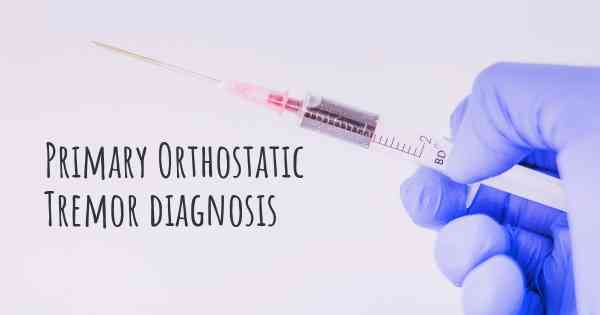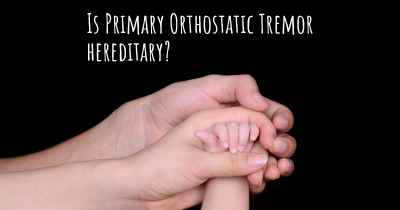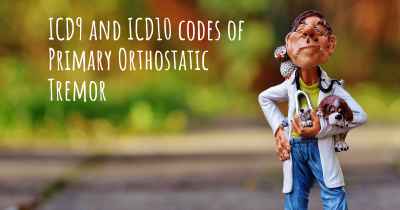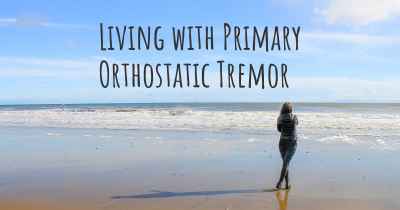How is Primary Orthostatic Tremor diagnosed?
See how Primary Orthostatic Tremor is diagnosed. Which specialists are essential to meet, what tests are needed and other useful information for the diagnosis of Primary Orthostatic Tremor

Diagnosis of Primary Orthostatic Tremor
Primary Orthostatic Tremor (POT) is a rare neurological disorder characterized by a rapid tremor in the legs when standing. It is often misdiagnosed or overlooked due to its unique symptoms and lack of awareness among healthcare professionals. However, with proper evaluation and diagnostic tests, POT can be accurately diagnosed.
Clinical Evaluation
The first step in diagnosing Primary Orthostatic Tremor is a thorough clinical evaluation by a neurologist or movement disorder specialist. The doctor will review the patient's medical history, including any family history of tremors or movement disorders, and conduct a physical examination.
During the physical examination, the doctor will observe the patient's tremor while standing. The tremor in POT is typically high-frequency (13-18 Hz), fine, and rhythmic, affecting both legs symmetrically. It may not be visible to the naked eye but can be detected through surface electromyography (EMG) or accelerometry.
Electromyography (EMG)
EMG is a diagnostic test that measures the electrical activity of muscles. In the case of Primary Orthostatic Tremor, EMG can be used to detect the characteristic high-frequency tremor in the leg muscles while standing. Surface EMG electrodes are placed on the muscles of the legs, and the patient is asked to stand still. The electrical signals from the muscles are recorded and analyzed to determine the presence of tremor.
It is important to note that the tremor in Primary Orthostatic Tremor is not present at rest or during other activities, making EMG a crucial diagnostic tool.
Accelerometry
Accelerometry is another diagnostic test that can be used to detect the tremor associated with Primary Orthostatic Tremor. It involves placing small accelerometers on the legs, which measure the acceleration and movement of the limbs. The accelerometers can detect the high-frequency tremor in the leg muscles while standing, providing objective evidence of POT.
Accelerometry is particularly useful when the tremor is not easily visible or when EMG is not available.
Video Recording
Video recording can be a valuable tool in diagnosing Primary Orthostatic Tremor. The patient is asked to stand still while being recorded, allowing the doctor to observe the tremor in detail. The video can be reviewed and analyzed to confirm the presence of the characteristic high-frequency tremor in the legs.
Video recording provides visual evidence of the tremor, aiding in the diagnosis and differentiation from other movement disorders.
Differential Diagnosis
Primary Orthostatic Tremor can be challenging to diagnose due to its similarity to other movement disorders. It is important to rule out secondary causes of orthostatic tremor, such as Parkinson's disease, essential tremor, or drug-induced tremors.
The doctor may order additional tests, such as blood tests, brain imaging (MRI or CT scan), or a dopamine transporter (DAT) scan, to exclude other conditions and confirm the diagnosis of Primary Orthostatic Tremor.
Conclusion
Diagnosing Primary Orthostatic Tremor requires a comprehensive evaluation by a neurologist or movement disorder specialist. Clinical evaluation, electromyography (EMG), accelerometry, and video recording are the key diagnostic tools used to confirm the presence of the characteristic high-frequency tremor in the legs while standing. Differential diagnosis is essential to rule out other movement disorders. Early and accurate diagnosis is crucial for appropriate management and treatment of Primary Orthostatic Tremor.
Posted Dec 1, 2021 by Marie Witham 1500








